新概念第一册 Lesson 87~88课件(共34张PPT)
文档属性
| 名称 | 新概念第一册 Lesson 87~88课件(共34张PPT) | 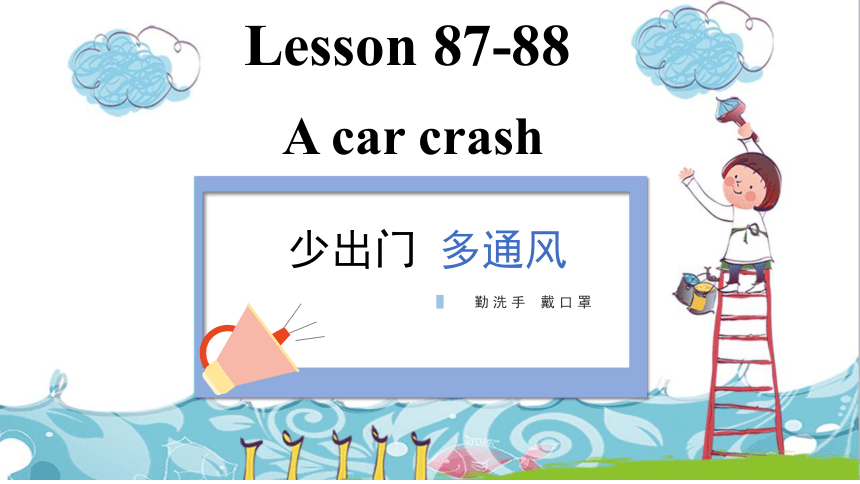 | |
| 格式 | pptx | ||
| 文件大小 | 3.3MB | ||
| 资源类型 | 教案 | ||
| 版本资源 | 新概念英语 | ||
| 科目 | 英语 | ||
| 更新时间 | 2024-07-30 09:27:36 | ||
图片预览

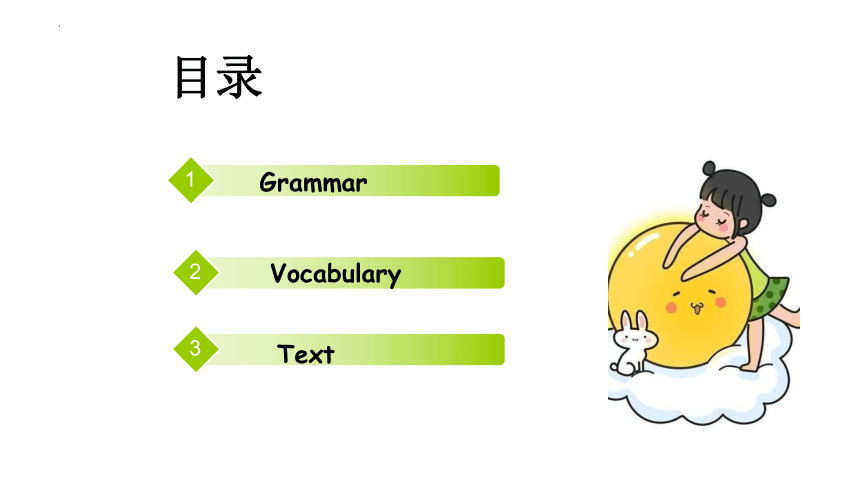

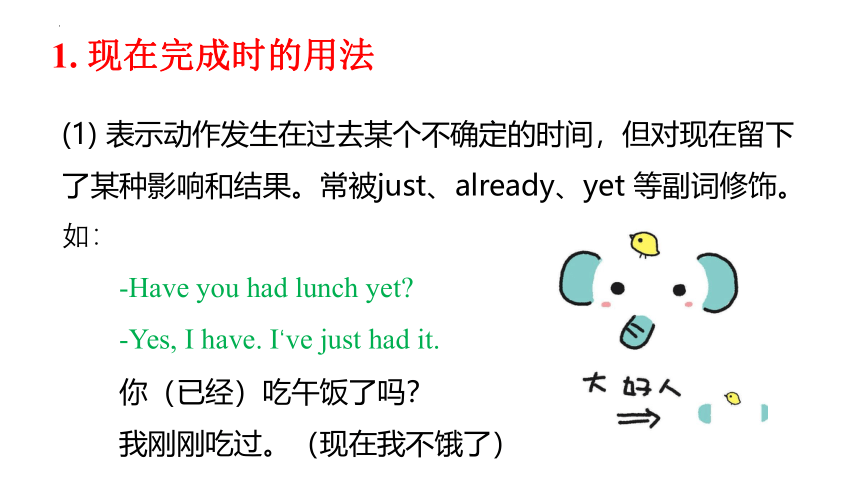
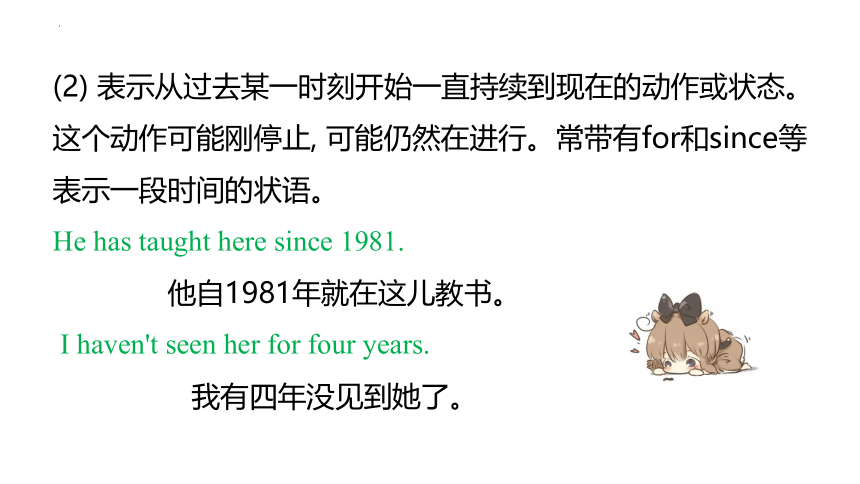

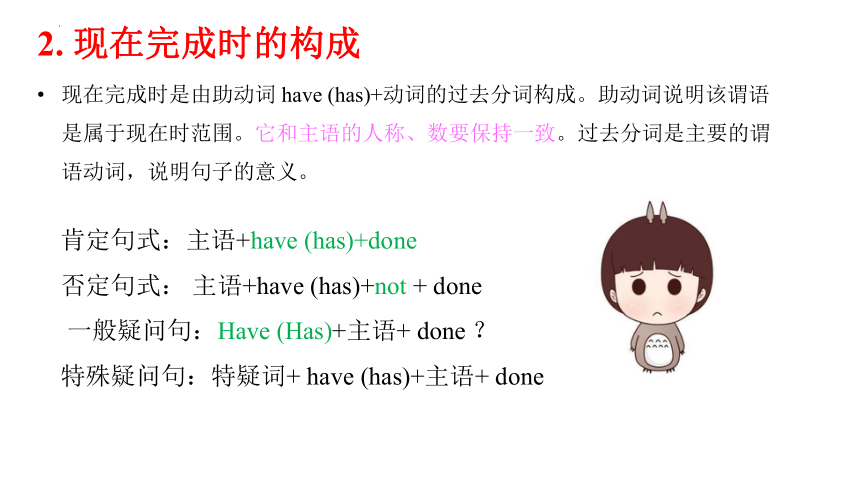
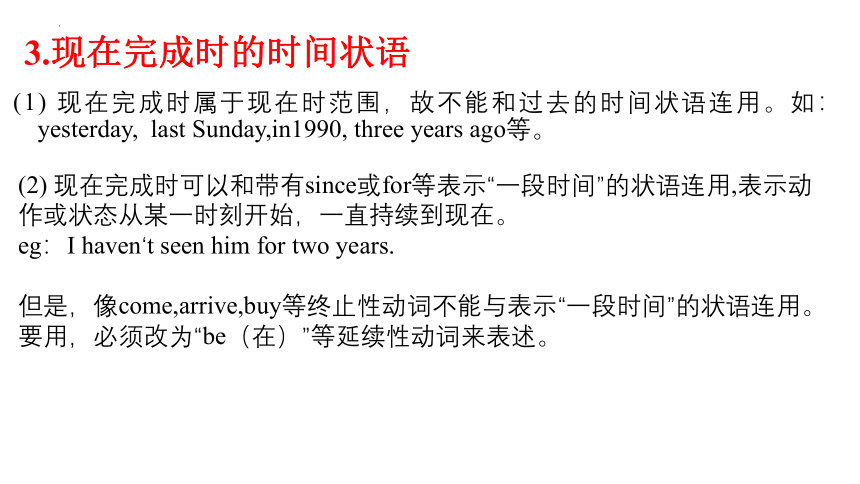
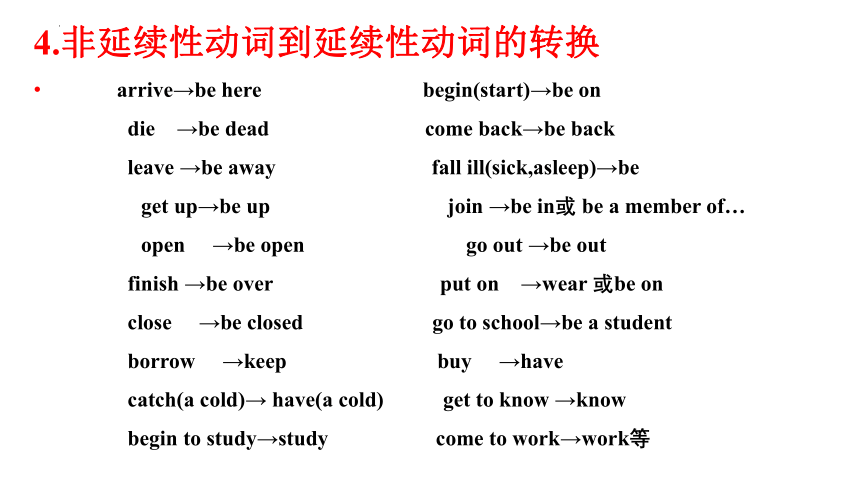
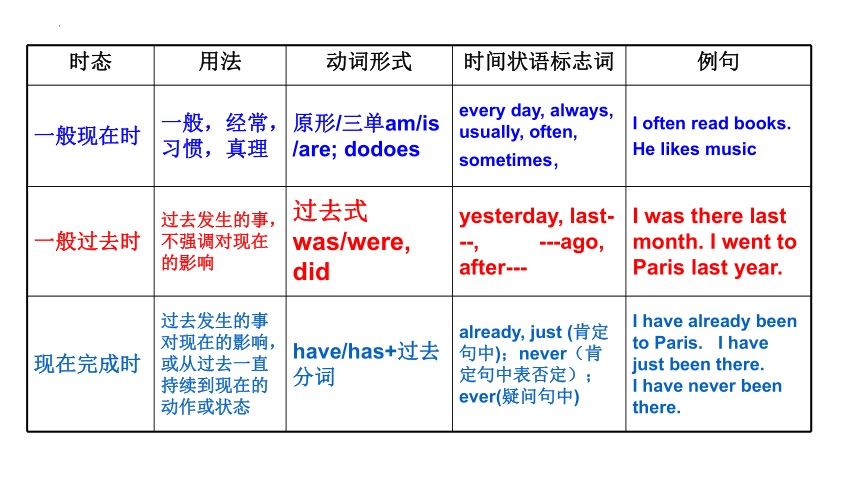
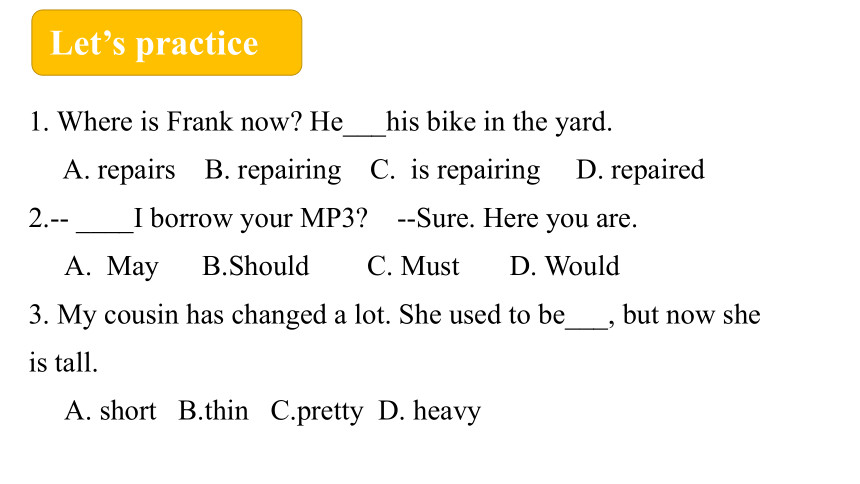
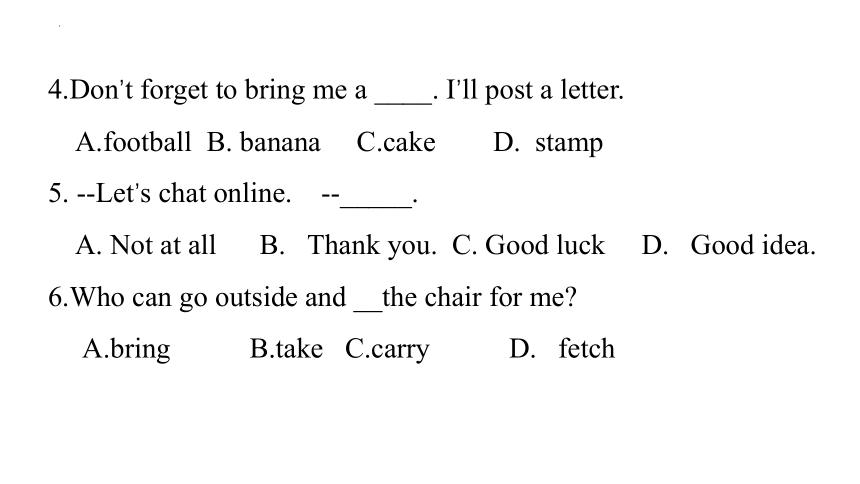
文档简介
(共34张PPT)
少出门 多通风
勤洗手 戴口罩
Lesson 87-88
A car crash
目录
Grammar
1
Vocabulary
2
Text
3
Grammar
Lesson 88 Have you … yet
1. 现在完成时的用法
(1) 表示动作发生在过去某个不确定的时间,但对现在留下了某种影响和结果。常被just、already、yet 等副词修饰。如:
-Have you had lunch yet
-Yes, I have. I‘ve just had it.
你(已经)吃午饭了吗?
我刚刚吃过。(现在我不饿了)
(2) 表示从过去某一时刻开始一直持续到现在的动作或状态。这个动作可能刚停止, 可能仍然在进行。常带有for和since等表示一段时间的状语。
He has taught here since 1981.
他自1981年就在这儿教书。
I haven't seen her for four years.
我有四年没见到她了。
(3) 表示说话前发生过一次或多次的动作, 现在成为一种经验,一般译为汉语“过”,常带有twice , ever, never, three times 等时间状语。
I have been to Beijing twice.
我去过北京两次。
2. 现在完成时的构成
现在完成时是由助动词 have (has)+动词的过去分词构成。助动词说明该谓语是属于现在时范围。它和主语的人称、数要保持一致。过去分词是主要的谓语动词,说明句子的意义。
肯定句式:主语+have (has)+done
否定句式: 主语+have (has)+not + done
一般疑问句:Have (Has)+主语+ done ?
特殊疑问句:特疑词+ have (has)+主语+ done ?
3.现在完成时的时间状语
(1) 现在完成时属于现在时范围,故不能和过去的时间状语连用。如:yesterday, last Sunday,in1990, three years ago等。
(2) 现在完成时可以和带有since或for等表示“一段时间”的状语连用,表示动作或状态从某一时刻开始,一直持续到现在。
eg:I haven‘t seen him for two years.
但是,像come,arrive,buy等终止性动词不能与表示“一段时间”的状语连用。要用,必须改为“be(在)”等延续性动词来表述。
4.非延续性动词到延续性动词的转换
arrive→be here begin(start)→be on
die →be dead come back→be back
leave →be away fall ill(sick,asleep)→be
get up→be up join →be in或 be a member of…
open →be open go out →be out
finish →be over put on →wear 或be on
close →be closed go to school→be a student
borrow →keep buy →have
catch(a cold)→ have(a cold) get to know →know
begin to study→study come to work→work等
时态 用法 动词形式 时间状语标志词 例句
一般现在时 一般,经常,习惯,真理 原形/三单am/is /are; dodoes every day, always, usually, often, sometimes, I often read books.
He likes music
一般过去时 过去发生的事,不强调对现在的影响 过去式was/were, did yesterday, last---, ---ago, after--- I was there last month. I went to Paris last year.
现在完成时 过去发生的事对现在的影响,或从过去一直持续到现在的动作或状态 have/has+过去分词 already, just (肯定句中);never(肯定句中表否定);ever(疑问句中) I have already been to Paris. I have just been there. I have never been there.
1. Where is Frank now He___his bike in the yard.
A. repairs B. repairing C. is repairing D. repaired
2.-- ____I borrow your MP3 --Sure. Here you are.
A. May B.Should C. Must D. Would
3. My cousin has changed a lot. She used to be___, but now she is tall.
A. short B.thin C.pretty D. heavy
Let’s practice
4.Don’t forget to bring me a ____. I’ll post a letter.
A.football B. banana C.cake D. stamp
5. --Let’s chat online. --_____.
A. Not at all B. Thank you. C. Good luck D. Good idea.
6.Who can go outside and __the chair for me
A.bring B.take C.carry D. fetch
1. Have you found your handbag yet (做出否定答复)
No, I haven’t found my lost handbag yet.
2.I met the old friend last winter.(划线部分提问)
When did you meet the old friend
3. When did you bing us your car (做出回答)
I bought my car here last Tuesday
4.The number of his car is LXE8976.(划线提问)
What’s his car number
句型转换
Vocabulary
Lesson 87 A car crash
One car come , one car go , two car pengpeng , one car die (死).
a car crash
[kr ]
Have you ever seen a car crash
Were you frightened
What will you do if you saw a car crash
attendant [ ’tend nt] n. 接待员
bring [brI ] v. 带来,送来
(brought, brought) [br :t]
garage [‘ɡ rɑ:d ] n. 车库,汽车修理厂
crash [kr ] n. 碰撞
lamp-post [l mp-p ust] n. 灯杆
repair [rI’pe ] v. 修理
try [traI] v. 努力,设法
New words and expressions
attendant
n.服务员,侍者
我们酒店有30位接待员。
列车员
train attendant
attend school 上学;读书;
attend a meeting 参加会议
attend a wedding 参加婚礼
Our hotel has thirty attendants.
与attendant意思相近的还有:
waiter: 男侍者 waitress: 女侍者
attend v.参加,出席
(bring-brought-brought)
bring sth. to sb.=bring sb. sth. 给某人带来某物
她给我带来了一个好消息。
She brought a piece of good news to me.
=
take:带走 Take me home.带我回家。
take sth to some place 把……带去哪里
bring
fetch:带去并且取过来,是双程的。
She brought me a piece of good news.
bring & take
bring sb./sth. to some place 把某人或某物带到某地来
take sb./sth. to some place 把某人或某物带去某地
他带了些朋友到家里来。
He brought some friends to his home.
她将带弟弟来参加我的生日聚会。
She will bring her little brother to my birthday party.
别把玩具带到学校去。
Don't take the toys to school.
在私家车库进行的家中旧货出售,车库售物
garage sale
garage
n. 车库,汽车修理厂
crash
a car crash
an air crash
飞机坠毁
n. 碰撞
A car crashed.
A plane crashed.
crash vi.碰、撞
lamp-post
灯杆,路灯柱
gate post 门柱
post:支柱
修,修理(动词,名词均可)
我要把自行车修一下。
I’ll repair my bicycle.
这台机器正在修理。
This machine is under repair.
repair
try
n./ v.设法,努力
try to do sth. 设法做某事
try doing sth. 试着做某事(不一定成功)
try to do侧重尽力,为了达到目的而努力。try doing 只是一种新的尝试,并没有一定明显的目的性。
try on… 试穿……
Please try on this coat.
请试穿一下这件大衣。
try one's best/do one's best to do sth
尽某人最大努力做某事
我想要尽我最大努力好好学习。
I want to try my best to study well.
try n. 尝试 试验
have a try 试一试
It‘s a good try. 很好的尝试
lamp-post [ 'l mp-p st ]
[ ’tend nt]
attendant
接待员
Mr. Wood
Text
1.What's the number of the car It's LFZ 312G.2.When did Mr.Wood bring his car to the garage He brought it here three days ago.3.How did Mr. Wood crash his car He drove it into a lamp-post.What does Mr.Wood need He needsa new car!Readand answer1. bring-brought –brought 带来
bring sb. sth.=bring sth.to sb.
请给我带一些花来。
Please bring me some flowers.
= Please bring some flowers ____ me .
to
Dialogue analysis
2. work on 从事,忙于
Have you finished your homework
No, I’m still ______________ it .
3. Have your mechanics finished yet
yet 用在现在完成时的否定句,疑问句中。
Has the boss left_____
working on
yet
4. have a look at 看一看
have a try 试一试
5. bring 带来
take 带去
He always ______ some flowers when he visits me .
Mrs. Williams _____ her son to hospital last night.
brings
took
Homework
不
多
哟
!
准备Lesson87-88的听写。
发Lesson87-88的录音(课文读一遍,单词两遍)。
听读并背诵Lesson87的课文。
完成配套练习作业+抄写单词两遍。
少出门 多通风
勤洗手 戴口罩
Lesson 87-88
A car crash
目录
Grammar
1
Vocabulary
2
Text
3
Grammar
Lesson 88 Have you … yet
1. 现在完成时的用法
(1) 表示动作发生在过去某个不确定的时间,但对现在留下了某种影响和结果。常被just、already、yet 等副词修饰。如:
-Have you had lunch yet
-Yes, I have. I‘ve just had it.
你(已经)吃午饭了吗?
我刚刚吃过。(现在我不饿了)
(2) 表示从过去某一时刻开始一直持续到现在的动作或状态。这个动作可能刚停止, 可能仍然在进行。常带有for和since等表示一段时间的状语。
He has taught here since 1981.
他自1981年就在这儿教书。
I haven't seen her for four years.
我有四年没见到她了。
(3) 表示说话前发生过一次或多次的动作, 现在成为一种经验,一般译为汉语“过”,常带有twice , ever, never, three times 等时间状语。
I have been to Beijing twice.
我去过北京两次。
2. 现在完成时的构成
现在完成时是由助动词 have (has)+动词的过去分词构成。助动词说明该谓语是属于现在时范围。它和主语的人称、数要保持一致。过去分词是主要的谓语动词,说明句子的意义。
肯定句式:主语+have (has)+done
否定句式: 主语+have (has)+not + done
一般疑问句:Have (Has)+主语+ done ?
特殊疑问句:特疑词+ have (has)+主语+ done ?
3.现在完成时的时间状语
(1) 现在完成时属于现在时范围,故不能和过去的时间状语连用。如:yesterday, last Sunday,in1990, three years ago等。
(2) 现在完成时可以和带有since或for等表示“一段时间”的状语连用,表示动作或状态从某一时刻开始,一直持续到现在。
eg:I haven‘t seen him for two years.
但是,像come,arrive,buy等终止性动词不能与表示“一段时间”的状语连用。要用,必须改为“be(在)”等延续性动词来表述。
4.非延续性动词到延续性动词的转换
arrive→be here begin(start)→be on
die →be dead come back→be back
leave →be away fall ill(sick,asleep)→be
get up→be up join →be in或 be a member of…
open →be open go out →be out
finish →be over put on →wear 或be on
close →be closed go to school→be a student
borrow →keep buy →have
catch(a cold)→ have(a cold) get to know →know
begin to study→study come to work→work等
时态 用法 动词形式 时间状语标志词 例句
一般现在时 一般,经常,习惯,真理 原形/三单am/is /are; dodoes every day, always, usually, often, sometimes, I often read books.
He likes music
一般过去时 过去发生的事,不强调对现在的影响 过去式was/were, did yesterday, last---, ---ago, after--- I was there last month. I went to Paris last year.
现在完成时 过去发生的事对现在的影响,或从过去一直持续到现在的动作或状态 have/has+过去分词 already, just (肯定句中);never(肯定句中表否定);ever(疑问句中) I have already been to Paris. I have just been there. I have never been there.
1. Where is Frank now He___his bike in the yard.
A. repairs B. repairing C. is repairing D. repaired
2.-- ____I borrow your MP3 --Sure. Here you are.
A. May B.Should C. Must D. Would
3. My cousin has changed a lot. She used to be___, but now she is tall.
A. short B.thin C.pretty D. heavy
Let’s practice
4.Don’t forget to bring me a ____. I’ll post a letter.
A.football B. banana C.cake D. stamp
5. --Let’s chat online. --_____.
A. Not at all B. Thank you. C. Good luck D. Good idea.
6.Who can go outside and __the chair for me
A.bring B.take C.carry D. fetch
1. Have you found your handbag yet (做出否定答复)
No, I haven’t found my lost handbag yet.
2.I met the old friend last winter.(划线部分提问)
When did you meet the old friend
3. When did you bing us your car (做出回答)
I bought my car here last Tuesday
4.The number of his car is LXE8976.(划线提问)
What’s his car number
句型转换
Vocabulary
Lesson 87 A car crash
One car come , one car go , two car pengpeng , one car die (死).
a car crash
[kr ]
Have you ever seen a car crash
Were you frightened
What will you do if you saw a car crash
attendant [ ’tend nt] n. 接待员
bring [brI ] v. 带来,送来
(brought, brought) [br :t]
garage [‘ɡ rɑ:d ] n. 车库,汽车修理厂
crash [kr ] n. 碰撞
lamp-post [l mp-p ust] n. 灯杆
repair [rI’pe ] v. 修理
try [traI] v. 努力,设法
New words and expressions
attendant
n.服务员,侍者
我们酒店有30位接待员。
列车员
train attendant
attend school 上学;读书;
attend a meeting 参加会议
attend a wedding 参加婚礼
Our hotel has thirty attendants.
与attendant意思相近的还有:
waiter: 男侍者 waitress: 女侍者
attend v.参加,出席
(bring-brought-brought)
bring sth. to sb.=bring sb. sth. 给某人带来某物
她给我带来了一个好消息。
She brought a piece of good news to me.
=
take:带走 Take me home.带我回家。
take sth to some place 把……带去哪里
bring
fetch:带去并且取过来,是双程的。
She brought me a piece of good news.
bring & take
bring sb./sth. to some place 把某人或某物带到某地来
take sb./sth. to some place 把某人或某物带去某地
他带了些朋友到家里来。
He brought some friends to his home.
她将带弟弟来参加我的生日聚会。
She will bring her little brother to my birthday party.
别把玩具带到学校去。
Don't take the toys to school.
在私家车库进行的家中旧货出售,车库售物
garage sale
garage
n. 车库,汽车修理厂
crash
a car crash
an air crash
飞机坠毁
n. 碰撞
A car crashed.
A plane crashed.
crash vi.碰、撞
lamp-post
灯杆,路灯柱
gate post 门柱
post:支柱
修,修理(动词,名词均可)
我要把自行车修一下。
I’ll repair my bicycle.
这台机器正在修理。
This machine is under repair.
repair
try
n./ v.设法,努力
try to do sth. 设法做某事
try doing sth. 试着做某事(不一定成功)
try to do侧重尽力,为了达到目的而努力。try doing 只是一种新的尝试,并没有一定明显的目的性。
try on… 试穿……
Please try on this coat.
请试穿一下这件大衣。
try one's best/do one's best to do sth
尽某人最大努力做某事
我想要尽我最大努力好好学习。
I want to try my best to study well.
try n. 尝试 试验
have a try 试一试
It‘s a good try. 很好的尝试
lamp-post [ 'l mp-p st ]
[ ’tend nt]
attendant
接待员
Mr. Wood
Text
1.What's the number of the car It's LFZ 312G.2.When did Mr.Wood bring his car to the garage He brought it here three days ago.3.How did Mr. Wood crash his car He drove it into a lamp-post.What does Mr.Wood need He needsa new car!Readand answer1. bring-brought –brought 带来
bring sb. sth.=bring sth.to sb.
请给我带一些花来。
Please bring me some flowers.
= Please bring some flowers ____ me .
to
Dialogue analysis
2. work on 从事,忙于
Have you finished your homework
No, I’m still ______________ it .
3. Have your mechanics finished yet
yet 用在现在完成时的否定句,疑问句中。
Has the boss left_____
working on
yet
4. have a look at 看一看
have a try 试一试
5. bring 带来
take 带去
He always ______ some flowers when he visits me .
Mrs. Williams _____ her son to hospital last night.
brings
took
Homework
不
多
哟
!
准备Lesson87-88的听写。
发Lesson87-88的录音(课文读一遍,单词两遍)。
听读并背诵Lesson87的课文。
完成配套练习作业+抄写单词两遍。
同课章节目录
